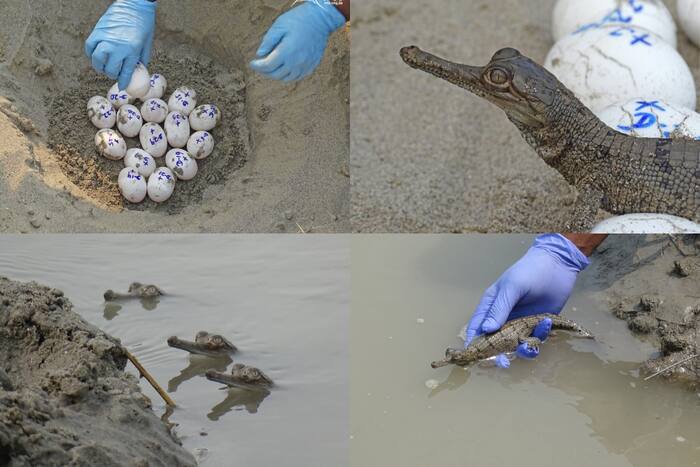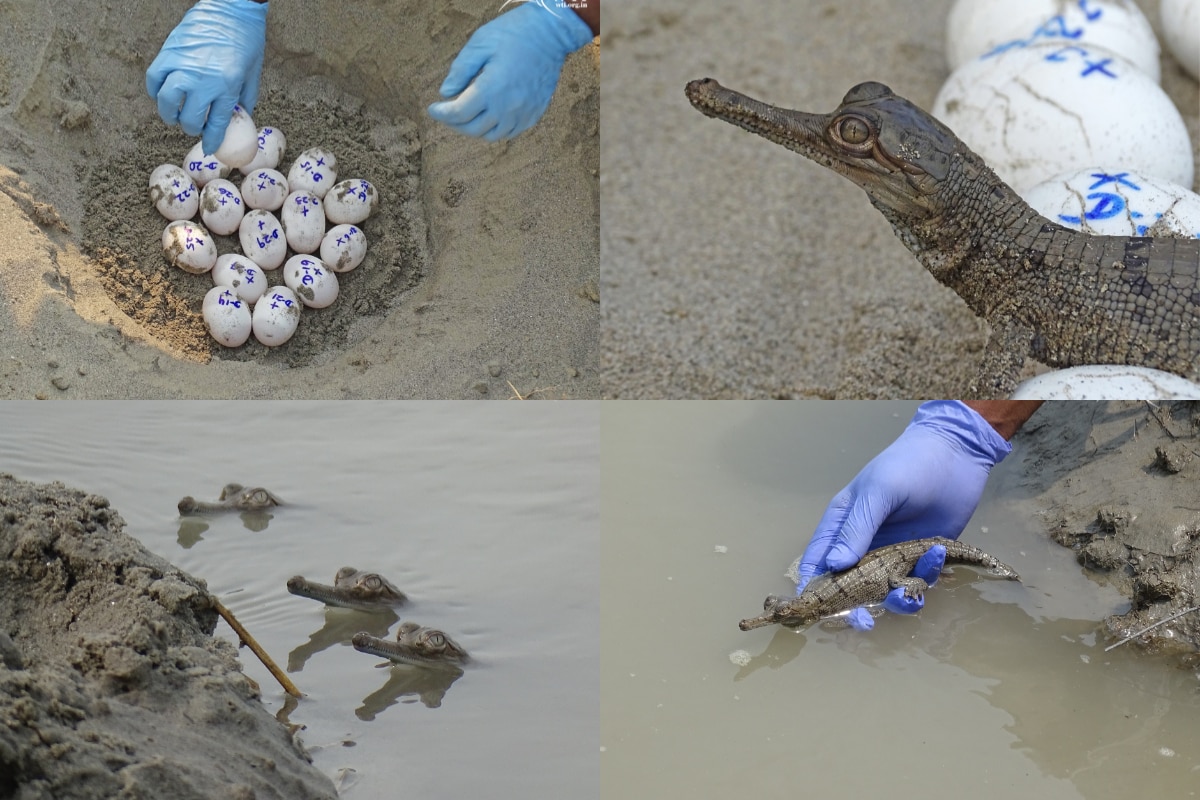The successful hatching and release of gharials highlight the importance of continuous monitoring and protection.

World Crocodile Day: 160 gharial eggs have hatched successfully across the Gandak River this past week, in time for World Crocodile Day this year. Wildlife Trust of India (WTI) in collaboration with the Forest Department and nest watchers from the local community, have been monitoring six nests across the river’s basin in Bihar and Uttar Pradesh for the past three months.
This is also the first time that a gharial nest was identified in the Sohagibarwa Wildlife Sanctuary in Uttar Pradesh. This nest, situated near Sadhu Ghat, belonged to a female gharial previously released in Nepal, identified from the tail scute marking on the reptile.
“Five of the nests were detected near the Dhanaha-Ratwal Bridge in Bihar. Out of the six nests detected this year, five have hatched successfully, while another is yet to hatch at the time of this report,” said Subrat Behera, Manager & Project Head, Gandak Gharial Recovery Project, WTI.
Last year, the team successfully released 125 gharial hatchlings from the Gandak River. Gharial nests are highly prone to river bank erosion, which has been the leading threat to the population of this critically endangered reptile.
Patrolling along the river starts in early March when the team looks for female gharials that are about to lay eggs and any other signs that hint towards the existence of a nest. Once a nest is confirmed, the team continuously monitors the site. In Sohagibarwa Wildlife Sanctuary, Uttar Pradesh, a nest containing 34 eggs was detected on 3rd May 2024.
Given the proximity to the waterline (less than three feet away), the eggs were collected and placed in an artificially created nest, away from the riverbank but close to the original site. The nest was monitored and protected by the forest staff of the Nichlaul Range, with technical assistance from the Wildlife Trust of India.
On 15th June 2024, 33 eggs from this nest hatched successfully, and all the hatchlings were released into the river at the same site. “By the time of hatching, the riverbank had eroded by more than ten feet from the natural nest location. Without the intervention of the team, we would have lost all the hatchlings to river erosion,” expressed Behera.
The successful hatching and release of gharials highlight the importance of continuous monitoring and protection, community participation in conservation efforts, and the need to address the challenges posed by riverbank erosion, predation and other threats to the gharial population in the Gandak River.
Since the launch of the Gandak Gharial Recovery Project in 2013, the project team has monitored and protected 44 gharial nests and released over 600 hatchlings into the Gandak River, adding a significant number of individuals to the local gharial population, also the second largest for the species. The project, in collaboration with the Department of Environment, Forest, and Climate Change, Government of Bihar and the Uttar Pradesh Forest Department, is supported by the Los Angeles Zoo, California.

